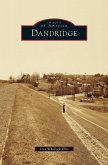In the early 1800s, West Tennessee was wild country, covered with dense hardwood forests and rich soil, with clear rivers and creeks winding through. In 1818, a final treaty was signed with the Native American tribes in the area, bringing white settlers from East Tennessee, North Carolina, and Virginia. In 1825, the town of Dyersburg was laid out and quickly began to thrive. By 1911, the present courthouse was completed, anchoring a classic Southern town square that now belongs to the National Register of Historic Places. Just a few months before the historic crash of the stock market in 1929, Dyersburg became the site of a cotton mill transplanted from Oswego, New York. Nearby, the mill built about 100 small houses for its workers, and this neighborhood became Milltown, a name that still shines in residents' memories.








